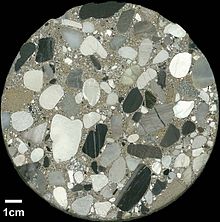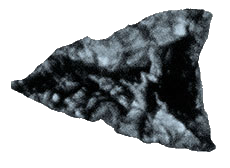
http://www.fi.edu/fellows/fellow1/oct98/create/sediment.htm
Rocks on the surface of the earth get worn down from wind, rain, and ice. This is called erosion. The little pieces that break off are washed down into the sea where they form a layer called sediment.
Over the course of hundreds of thousands of years, these layers are pressed tightly together. This pressure cements the layers together and they harden to form sedimentary rock.

http://www.fi.edu/fellows/fellow1/oct98/create/sediment.htm
|
Shale is one example of sedimentary rock. It is made when layers of mud and clay that are deposited on the ocean floor are pressed together. The individual particles of mud or clay are tiny: smaller than grains of sand. Shale may contain a variety of minerals, including clay minerals, quartz, and calcite. Shale can be split along the layers and people may do that to look for fossils, as shown in this picture. |

http://en.wikipedia.org/wiki/Shale |
|
Sandstone is another example of sedimentary rock. It is made when layers of sand that are deposited on the ocean floor are pressed together. Sandstone usually contains quartz and feldspar because these are such common minerals. It has a fine grainy texture. Click on the player to see an animation of layers of sand being deposited on the ocean floor to form sandstone. |
|
Conglomerate is a sedimentary rock that is formed when the particles that are deposited on the ocean floor are larger than grains of sand. These particles may be smaller than pebbles or as large as boulders. The conglomerate will contain all of the minerals in the rocks that were deposited. This is a sample of conglomerate that has been sliced to show the interior. |

http://en.wikipedia.org/wiki/ Conglomerate_(geology) |

|
|
|
Back to the Types of Rocks |
No further in this direction. |